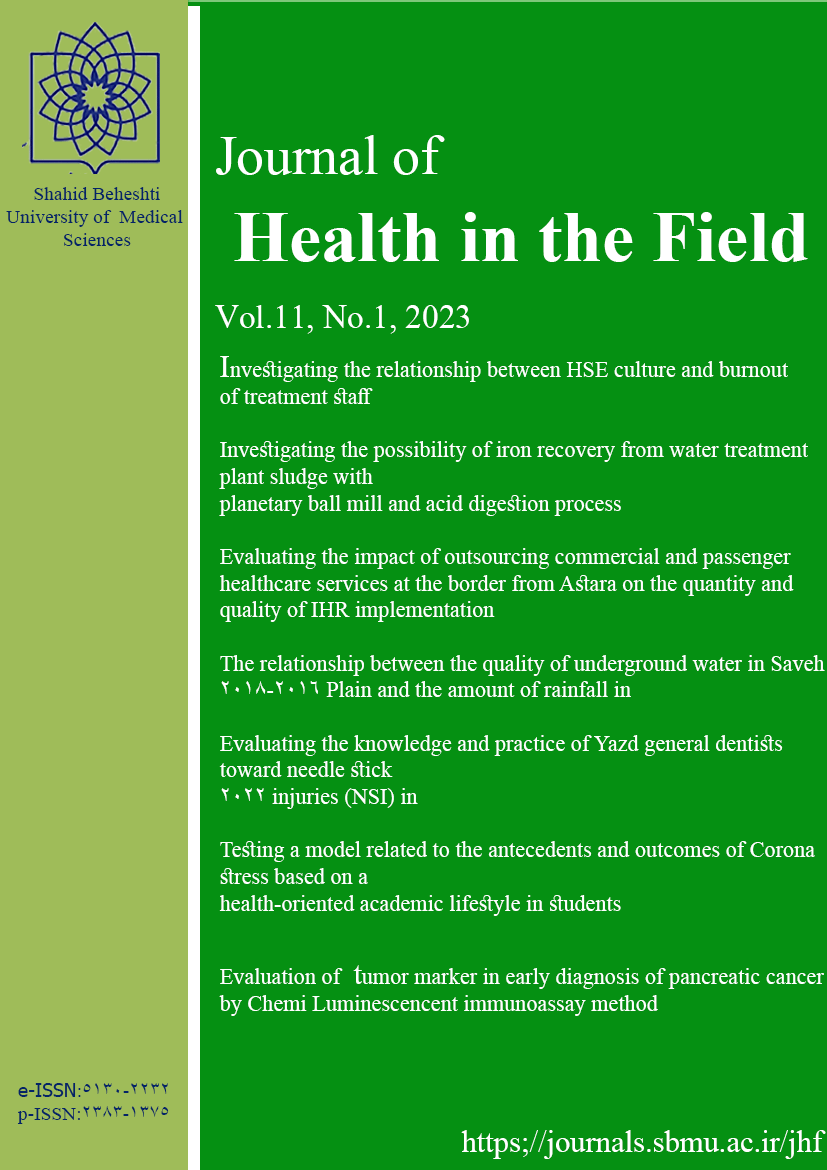Validity and reliability of the Persian edition of Halpin and Craft's Organizational Climate Questionnaire: A study among emergency medical center workers in Ahvaz, Iran
Journal of Behdasht dar Arseh (i.e., Health in the Field),
Vol. 11 No. 3 (1402),
16 Esfand 2024,
Page 1-9
https://doi.org/10.22037/jhf.v11i3.43942
Background and Aim: Appropriate organizational climate plays an important role in achieving the goals of the organization. To evaluate the organizational climate, a valid questionnaire is needed. This study was conducted with the aim of evaluating the validity and reliability of the Persian version of Halpin and Kraft's organizational climate questionnaire among the employees of emergency medical centers.
Materials and Methods: This descriptive-analytical study was conducted among 270 employees of emergency medical centers in Ahvaz between January and May 2021. Data collection was done by census method and using organizational climate questionnaire by Halpin and Croft. Validity of form, content, and translation of the questionnaire were checked by experts. Validity (convergent and divergent) and reliability were evaluated using factors loadings, average variance extracted (AVE), reciprocal factor loadings, Cronbach's alpha and composite reliability in SMART-PLS 3 software.
Results: The validity of the form, content and translation of the questionnaire was confirmed by experts according to the Iranian society. All factor loadings of questionnaire items and AVE index for all constructs were higher than 0.4. AVE index for the whole questionnaire was 0.518. Examining reciprocal factor loadings confirmed divergent validity. Cronbach's alpha index and composite reliability for all questionnaire constructs were higher than 0.7. Cronbach's alpha coefficient and composite reliability for the whole questionnaire were 0.966 and 0.968, respectively.
Conclusion: Validity and reliability of this questionnaire according to the Iranian society was confirmed at a high level. Therefore, this questionnaire can be used to evaluate the organizational climate in organizations, especially health care organizations and centers
